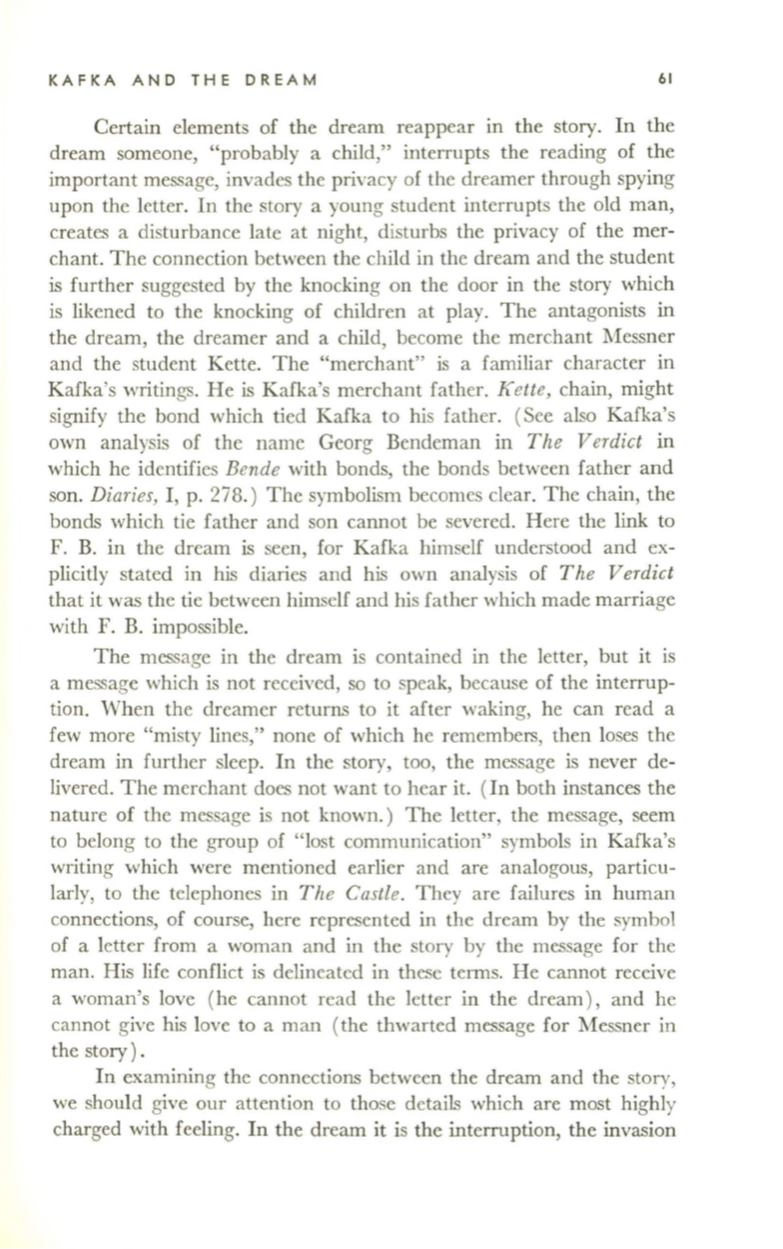
KAFKA AND THE DREAM
61
Certain elements of the dream reappear in the story.
In
the
dream someone, "probably a child," interrupts the reading of the
important message, invades the privacy of the dreamer through spying
upon the letter.
In
the story a young student interrupts the old man,
creates a disturbance late at night, disturbs the privacy of the mer–
chant. The connection between the child in the dream and the student
is further suggested by the knocking on the door in the story which
is likened to the knocking of children at play. The antagonists in
the dream, the dreamer and a child, become the merchant Messner
and the student Kette. The "merchant" is a familiar character in
Kafka's writings. He is Kafka's merchant father.
K ette,
chain, might
signify the bond which tied Kafka to his father. (See also Kafka's
own analysis of the name Georg Bendeman in
The Verdict
in
which he identifies
Bende
with bonds, the bonds between father and
son.
Diaries,
I, p. 278.) The symbolism becomes clear. The chain, the
bonds which tie father and son cannot be severed. Here the link to
F. B. in the dream is seen, for Kafka himself understood and ex–
plicitly stated in his diaries and his own analysis of
The Verdict
that it was the tie between himself and his father which made marriage
with F.
B.
impossible.
The message in the dream is contained in the letter, but it is
a message which is not received, so to speak, because of the interrup–
tion. When the dreamer returns to it after waking, he can read a
few more "misty lines," none of which he remembers, then loses the
dream in further sleep.
In
the story, too, the message is never de–
livered. The merchant does not want to hear it.
(In
both instances the
nature of the message is not known.) The letter, the message, seem
to belong to the group of "lost communication" symbols in Kafka's
writing which were mentioned earlier and are analogous, particu–
larly, to the telephones in
The Castle.
They are failures in human
connections, of course, here represented in the dream by the symbol
of a letter from a woman and in the story by the message for the
man. His life conflict is delineated in these terms. He cannot receive
a woman's love (he cannot read the letter in the dream), and he
cannot give his love to a man (the thwarted message for Messner in
the story).
In
examining the connections between the dream and the story,
we should give our attention to those details which are most highly
charged with feeling.
In
the dream it is the interruption, the invasion


